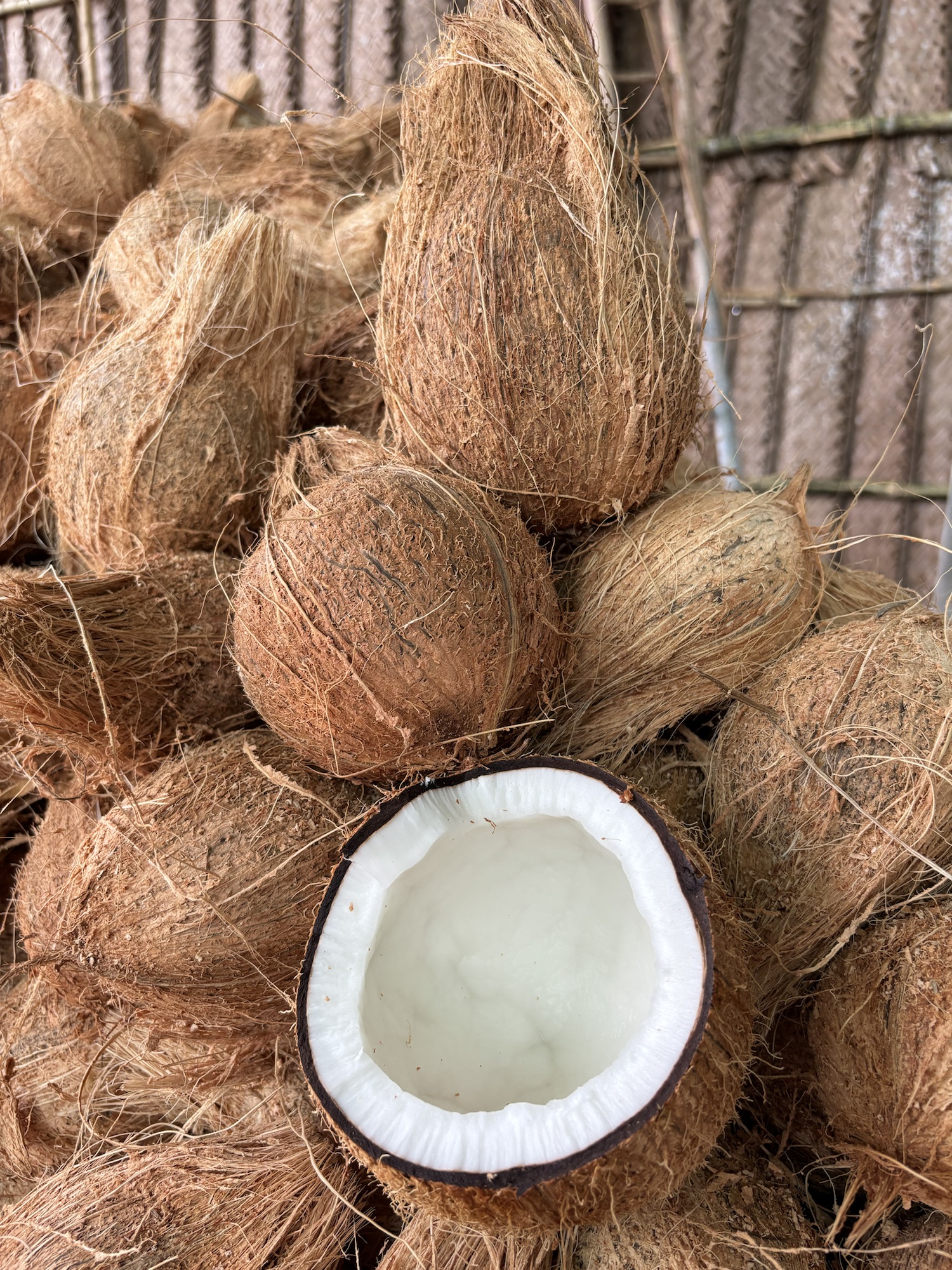
Coconut is considered an important plantation crop given that every single part of the coconut plant is valuable. The water and flesh of tender coconuts are widely consumed, especially during summers. The flesh itself is used in several cuisines, and is used to make coconut milk, which is among the most popular plant-based milks today. The coconut fruit is used to make oil, which is used in cooking and various other applications. The fronds of the coconut tree are used in thatched roofs; the coconut’s husk is used to make coir, which has a wide array of applications. In subtropical countries, it has come to be called a tree of life or “kalpavriksha”, which translates to “wish-giving tree” in Hindi.
Plantation crops such as coconut, rubber, areca, coffee, and so on, are generally grown in ecologically sensitive areas such as hilly regions or coastal areas. In the recent past, it has been observed that these areas are the first to face the effects of climate change. Melting glaciers, thermal expansion, warmer ocean temperatures, and non-biodegradable waste in oceans, all result in the coastal areas being impacted by extreme weather conditions.
A 2013 study had predicted, “Climate change will affect coconut plantation through higher temperatures, elevated CO2 concentration, precipitation changes, and increased weeds, incidence of pests and disease, and increased vulnerability of organic carbon pools.”
According to the Indian Council of Agricultural Research (ICAR), the ideal temperature for coconut growth and yield is 27 degrees Celsius, plus or minus five degrees, and relative humidity needs to be more than 60%. But between March and June 2024, the prime coconut growing belt was experiencing average temperatures upwards of 35 degrees Celsius, coupled with a low relative humidity of 30% to 50%. These conditions were far from ideal for coconut trees and resulted in a shortage of supply.

Speaking to Mongabay-India K.B. Hebbar, Director, ICAR-Central Plantation Crops Research Institute (CPCRI) says, “The southern coastal regions where coconuts are mostly grown are even more sensitive to climatic changes. In Andhra Pradesh, Tamil Nadu, Kerala and Karnataka, the average temperature has gone up by 3-4 degrees Celsius this summer. We are also finding a reduced humidity.”
The coconut supply shortage resulted in a rise in prices. Retail prices rose by Rs. 10, from Rs. 40 to Rs. 50 per coconut in some parts like Bengaluru and from Rs. 50 to Rs. 60 in most parts of Goa. In April and May, the prices of tender coconut in Chennai had even gone up to Rs. 90 each. Prior to the heat wave this year, the average price per quintal (100 kilograms of coconuts) was around Rs. 2,400 whereas it currently stands at Rs. 2,750.
The temperature increase also creates a corresponding rise in pest populations. More than 900 species of pests are known to be associated with cultivated and wild coconut palm.
Ramesh S.V., senior scientist, biotechnology, at CPCRI, Kasargod, who studies plant biochemistry aspects of drought, salinity and elevated temperatures says, “We are seeing a huge difference in production and nut setting not only in the coastal belt but also in the traditional coconut growing belts.” He adds, “We are also noticing that elevated temperatures have a great role to play in insect flare up. When temperatures go beyond a certain level, we have observed whiteflies attacks.”
Problems with the yield
Extreme heat also affects the quantity of water in the coconuts, says Kedarnath Chauhan, a coconut vendor in Goa. He says the produce now has thick flesh and little water. “The heat has dried up all the water,” he says. He adds that if rains arrive, the quality of coconuts will be better. But with the recent changes in the region’s climate, he is unsure of when that will happen.

Hebbar explains that a thick kernel is directly connected to maturity of the coconut fruit. “Generally after fertilisation, the coconut requires around six and a half months to become tender coconut and 12 months to reach complete maturity,” he says. Now, they are observing that the coconuts are reaching maturity faster due to the external heat. Since coconut trees are tall and hard to climb, it is not possible for farmers to check the maturity levels of the fruit before plucking them, or to know whether the fruit has matured sooner than they had planned for.
To add to this, in the parts of Tamil Nadu where there was a severe drought, entire plantations were destroyed and the trees dried up. Farmers had attempted to save their trees by calling for water tankers to irrigate their fields but the cost of water tankers was so high that they couldn’t afford to sustain it. The price of a coconut tree for its wood fell from Rs. 2,500 per tree to Rs. 1,000 per tree because the timber began to crack without moisture, and farmers faced huge losses.
Adaptations in cultivation
Coconut buds are extremely vulnerable to high heat during pollination and fertilisation. However, a 2020 study found that if the temperature is high but the moisture content in the air and soil remains high, the plant can continue to flower and fruit as normal. Researchers are now looking at strategies such as mulching, inter-cropping, and agro-techniques to maintain soil moisture.
Another study finds that agronomic adaptations such as soil moisture conservation, summer irrigation, drip irrigation, and fertiliser application not only minimise losses in majority of coconut growing regions, but also improve productivity substantially. It also recommends genetic adaptation measures. “…Growing improved, local, tall cultivars and hybrids under improved crop management is needed for the long-term adaptation of plantations to climate change, particularly in regions that are projected to be negatively impacted by climate change.”
However, one hurdle that the scientists also face in conducting research on coconut trees is the height of the trees, which makes it harder to access. For this reason, the ICAR-CPCRI in Kasaragod has built a scaffolding-like structure that allows researchers to get to the top of the coconut tree and study various aspects of the tree, from the leaves to the flowers and fruits.
When asked about what else they are observing in their laboratory, Ramesh SV shares that, “In our controlled greenhouse conditions, we are observing a spurt in the expression of polyphenols in some cultivars of coconut trees. This is an adaptive mechanism of the plant that it brings in its solutes or biochemicals to try to combat drought or high-temperature conditions.”
Content from : https://india.mongabay.com



